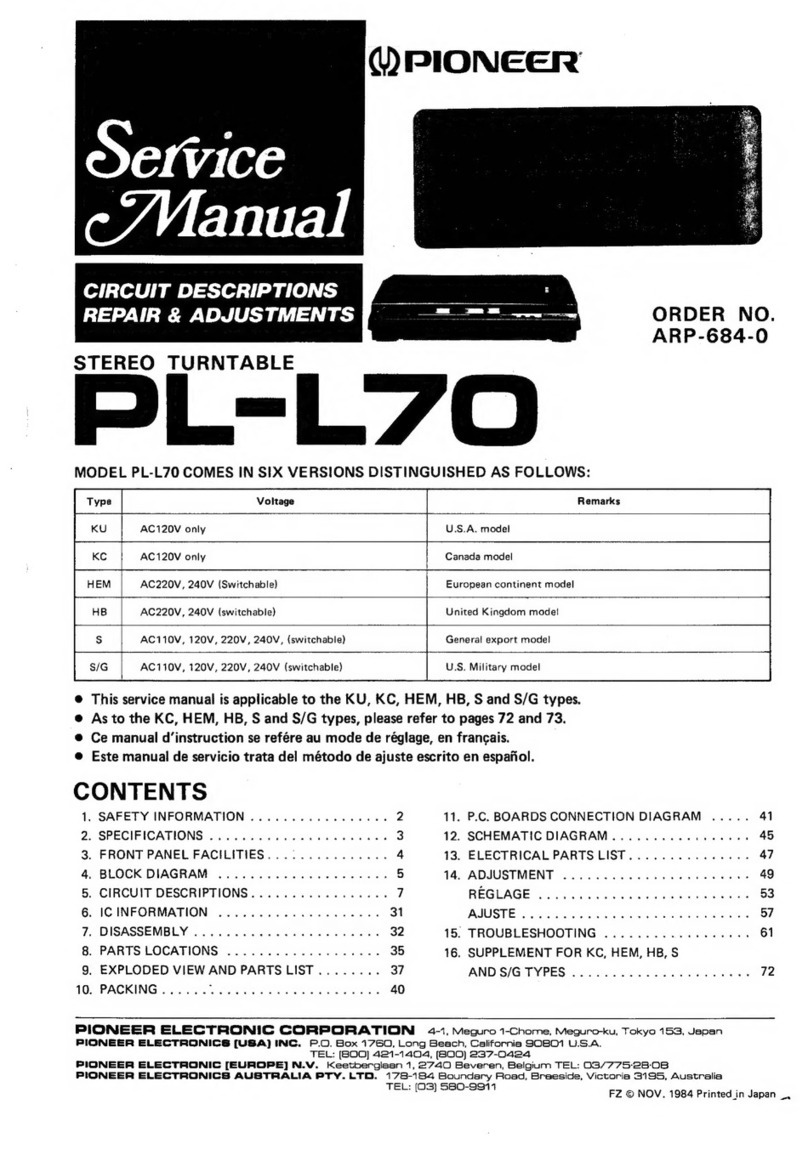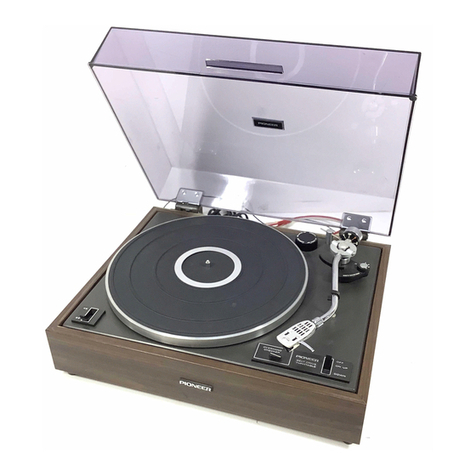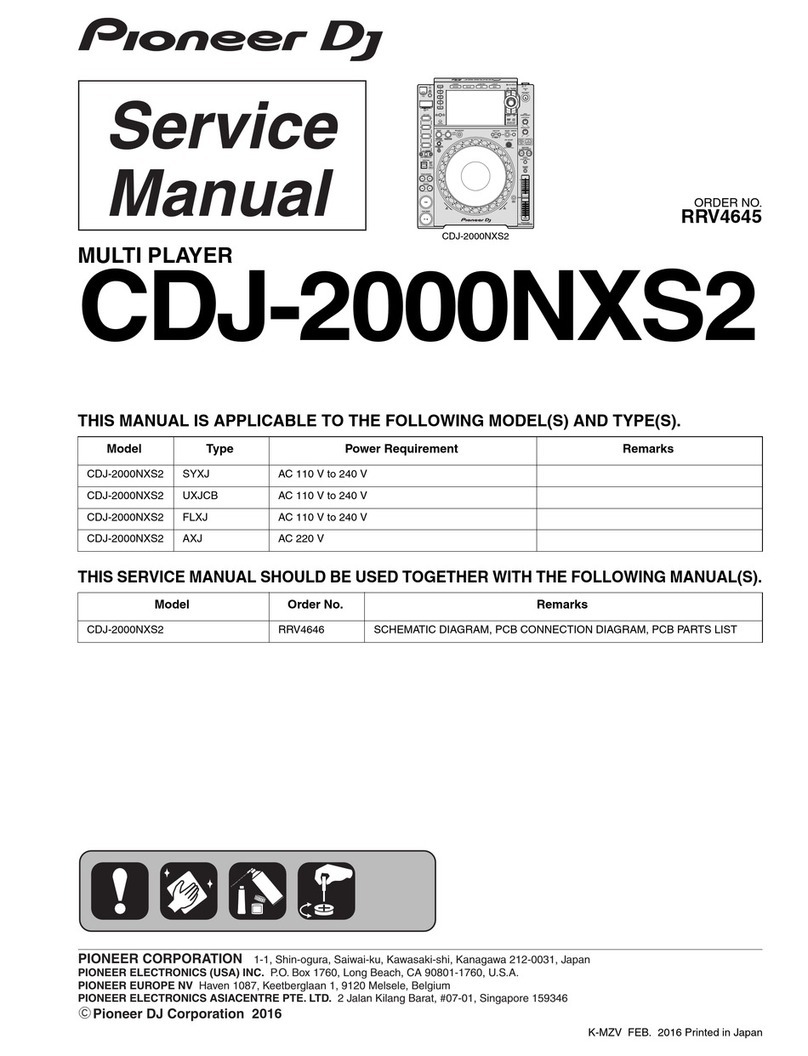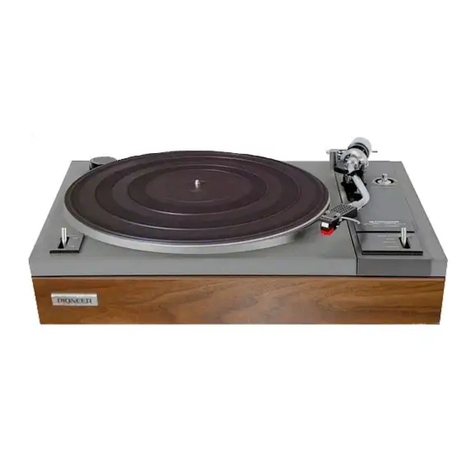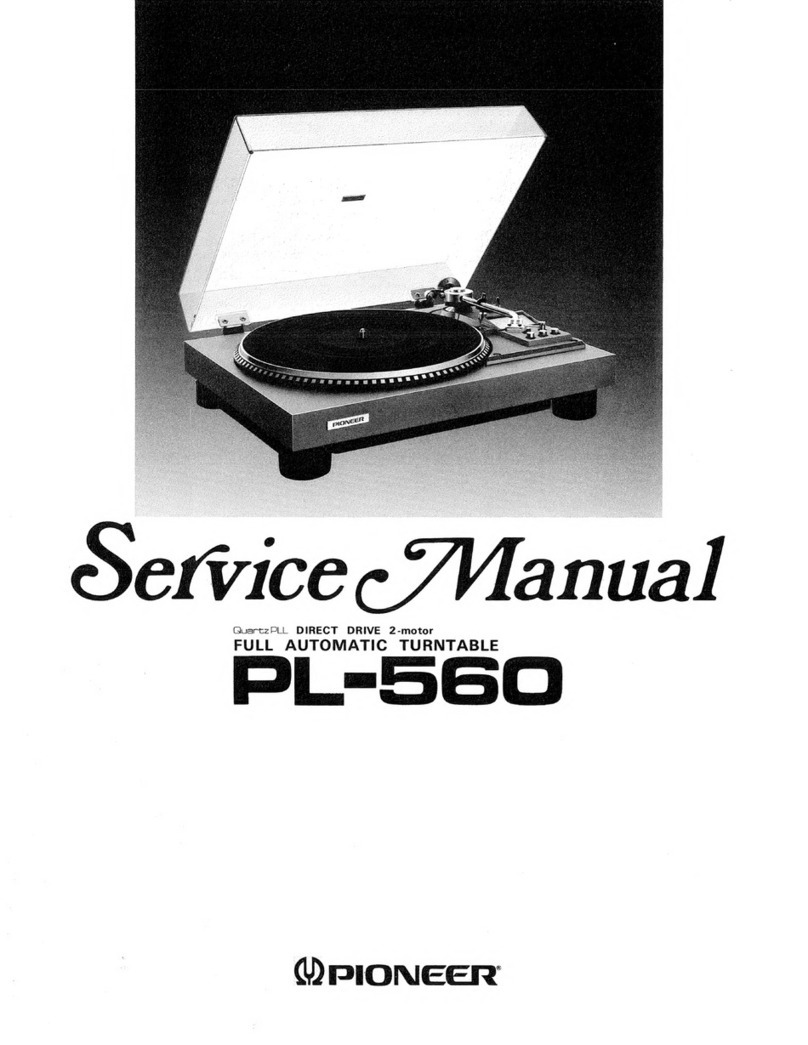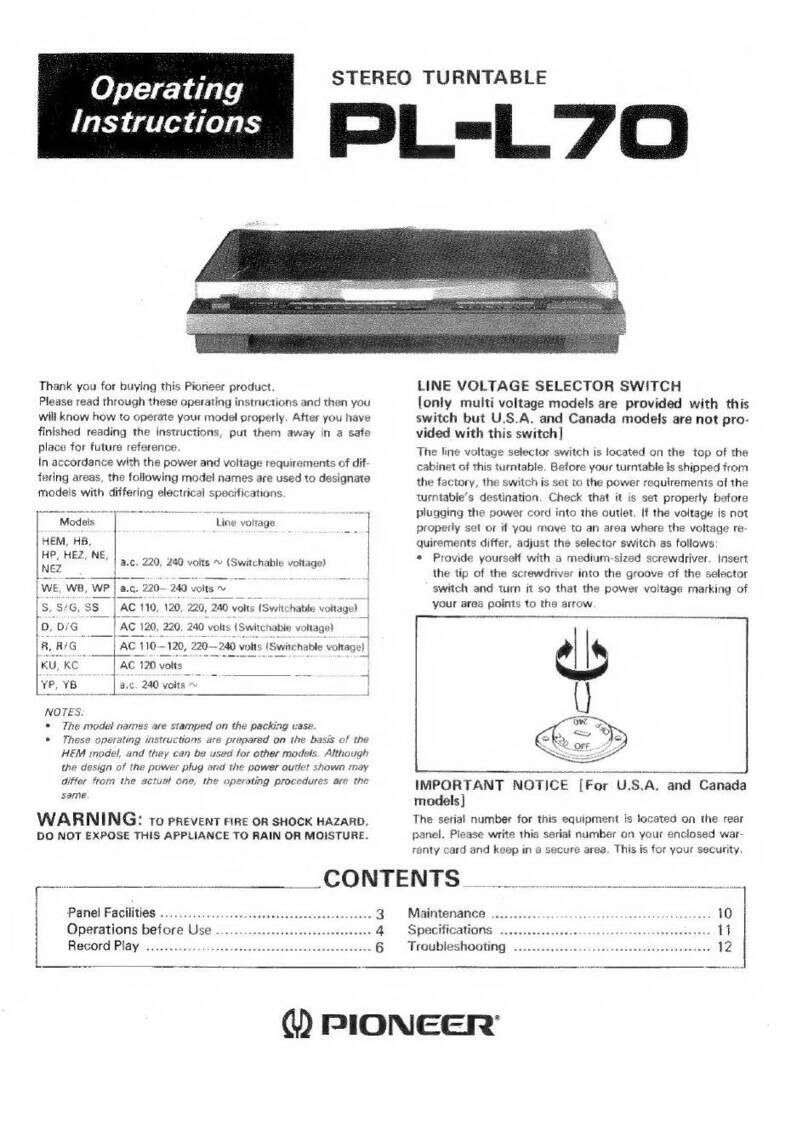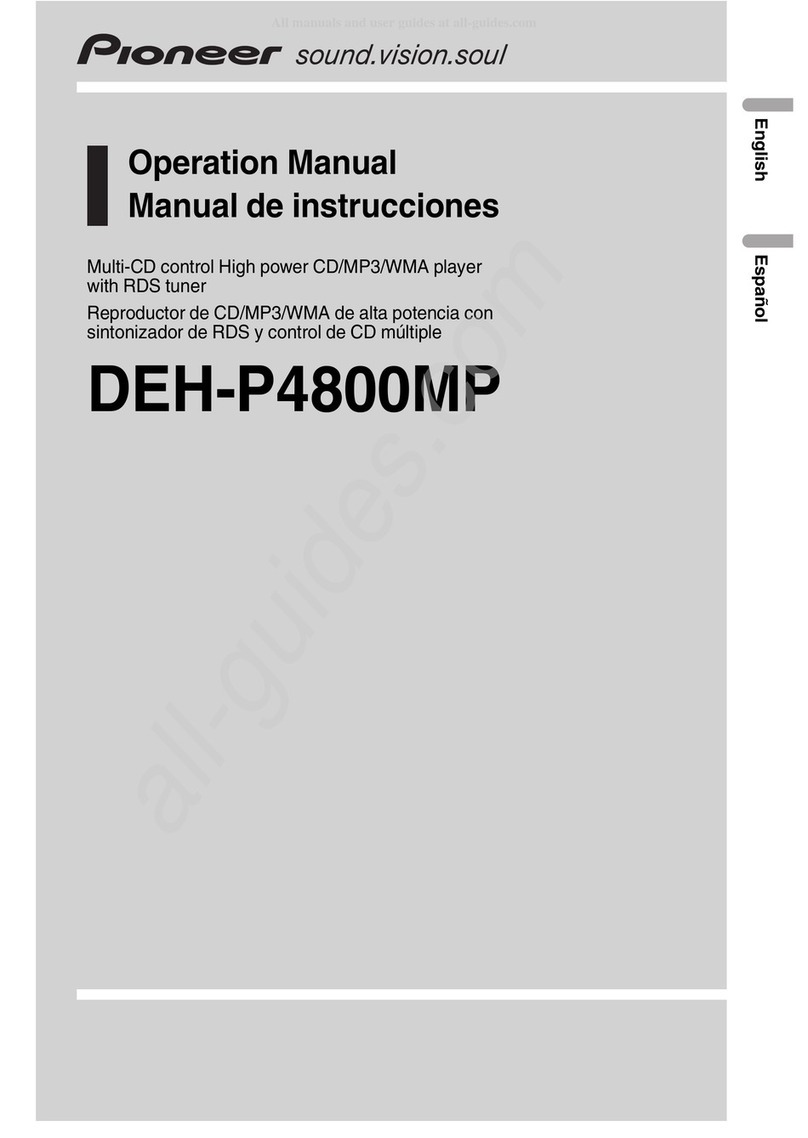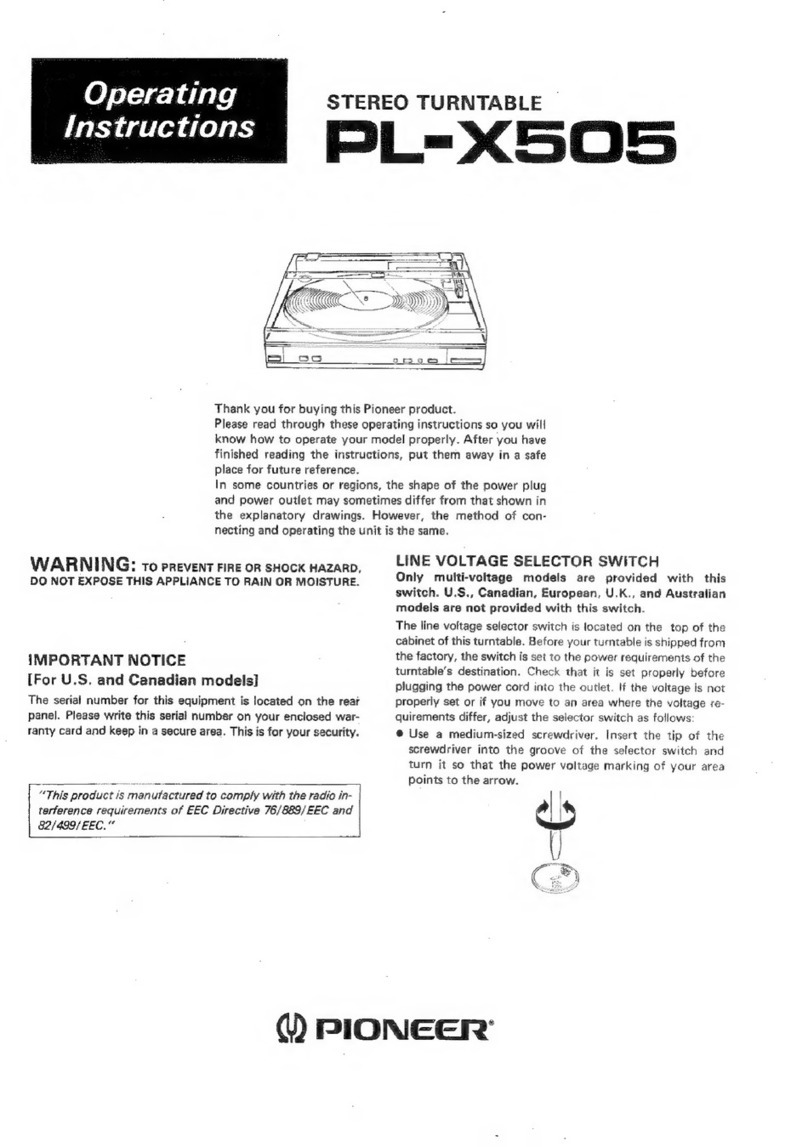
1.
SPECIFICATIONS
Motor
and
Turntable
Drive
System
.0......ccceece
neces
een
seeeeseeceeeeeeseees
Direct-drive
Motor
.
Quartz
PLL
Hail
motor
Turntable
Platter
........
310
mm
diam.
aluminum
alloy
die-cast
Speeds
33-1/3
and
45
rpm
Wow
and
Flutter
..
Less than
*0.012%
(WRMS)
0.025%
(WRMS)
+
0.035%
WTD
Peak
(DIN)
Values
marked
with
an
‘’*”
designate
the
wow
and
flutter
for
motor,
and
do
not
include
the
cartridge
or
tonearm
load.
Signat-to-Noise-Ratio
..............06
More
than
80
dB
(DIN-B)
(with
Pioneer
cartridge
model
PC-6MC)
Tonearm
NY
PO:
iar
iiceeesanstcesetees
Static-balance
type,
Straight
pipe
arm
Effective
Arm
Length
-.
235
mm
OVEINANG
iiss
siicasccsceecatats
conned
decsuceseetbenavevdesees
15mm
Usable
Cartridge
Weight
...
3g
(min.)
to
8 g
(max.}
PC-6MC
Specifications
Type
...
Moving
coil
type
Stylus...
0.3x0.
7m
mil
diamond
(PN-6
MC)
Output
Voltage
oo.
cee
eceeeessanenneeneasanasaeeees
2.2mVv
(1
kHz,
§
cm/s
LAT.
Peak)
Tracking
Force
..........02..-2...c0eeee
ee
1.7
g
to
2.3
g
(proper
2g}
Frequency
Response
Recommended
Load
..
Weight
+
10
to
35,000
Hz
-
50kQ
Subfunctions
Auto
lead
in,
Auto
return,
Auto
cut,
Repeat,
Quick
play,
Quick
stop,
Anti-skating,
Arm
elevation,
Tracking-force
direct-read-
out,
Tonearm
height
adjusting
device
(+
3
mm},
Insulator
height
adjusting
device,
Free
stop
hinges.
Miscellaneous
Power
Requirements
HE,
HB,
HP
models
.20.......
cc.
eesceeenesee
eee
AC
220
V/240
V
(switchable),
50,
60
Hz
KUT,
KCT
models
AC
120
V,
60
Hz
S,S/G
models
................4
AC
110
V/120 V/220 V/240
V
(switchable),
50,
60
Hz
Power
Consumption
HE,
HB,
HP
models
.
OW
KUT,
KCT
models
.
10W
S,
S/G
models
....
a.
7W
Dimensions
...........c:0ccceeeees
460
(W)
x
164
(H)
x
409
(D)
mm
18-1/8
(W)
x
6-1/2
(H)
x
16-1/8
(D)
in.
WIGKt
oie.
cseediccueetestiagesseucesibandestesecess
8.1
kg/17
Ib
14
oz
Accessories
EP
Adapter
..
psveelaceniviseee
Macetisaentccatoned
Operating
instructions
tee
baal,
Catridge
mounting
parts
(For
KUT
and
KCT
models)
Serews:
(IL):
G%e5
at
aoe
iyo,
Deeg
aeh
o
hace
Gu
cea
2
Screws:
(M))
4
pis
Tak
GATE
Saw
eee
wae
edd
ee
ae
2
Screws
(S)
isco
ek
aS
whe
ba
ed
ok
Sew
Seale
2
Washers
ss
\hiciss
ce
gow
s
Rieriiede'e
Kegele
oe
ee
2
NUS
chic
oe
casas
uepehare
OA
on
eormeban
nna
2
2
NOTE:
Specifications
and
design
subject
to
possible
modification
without
-
notice,
due
to
improvements.
